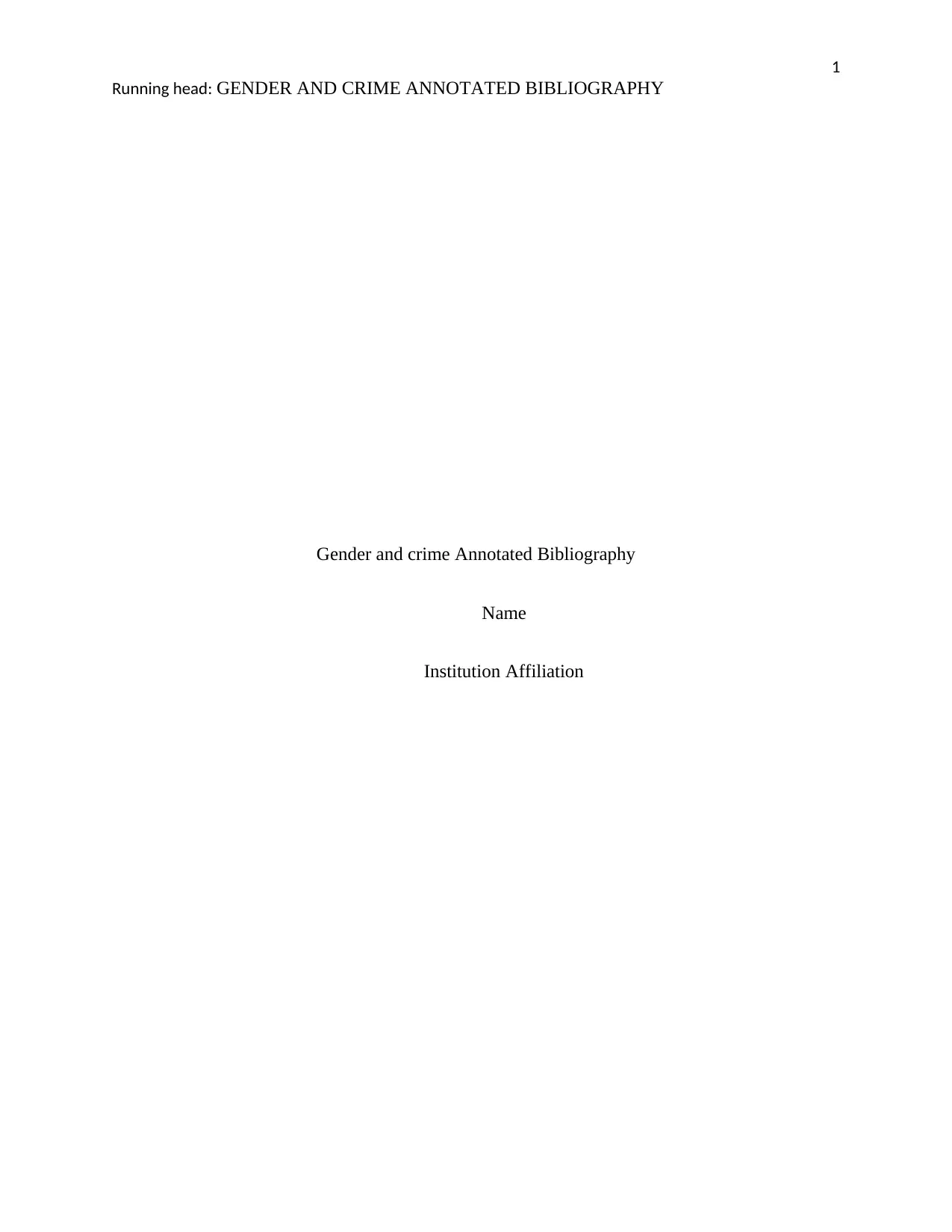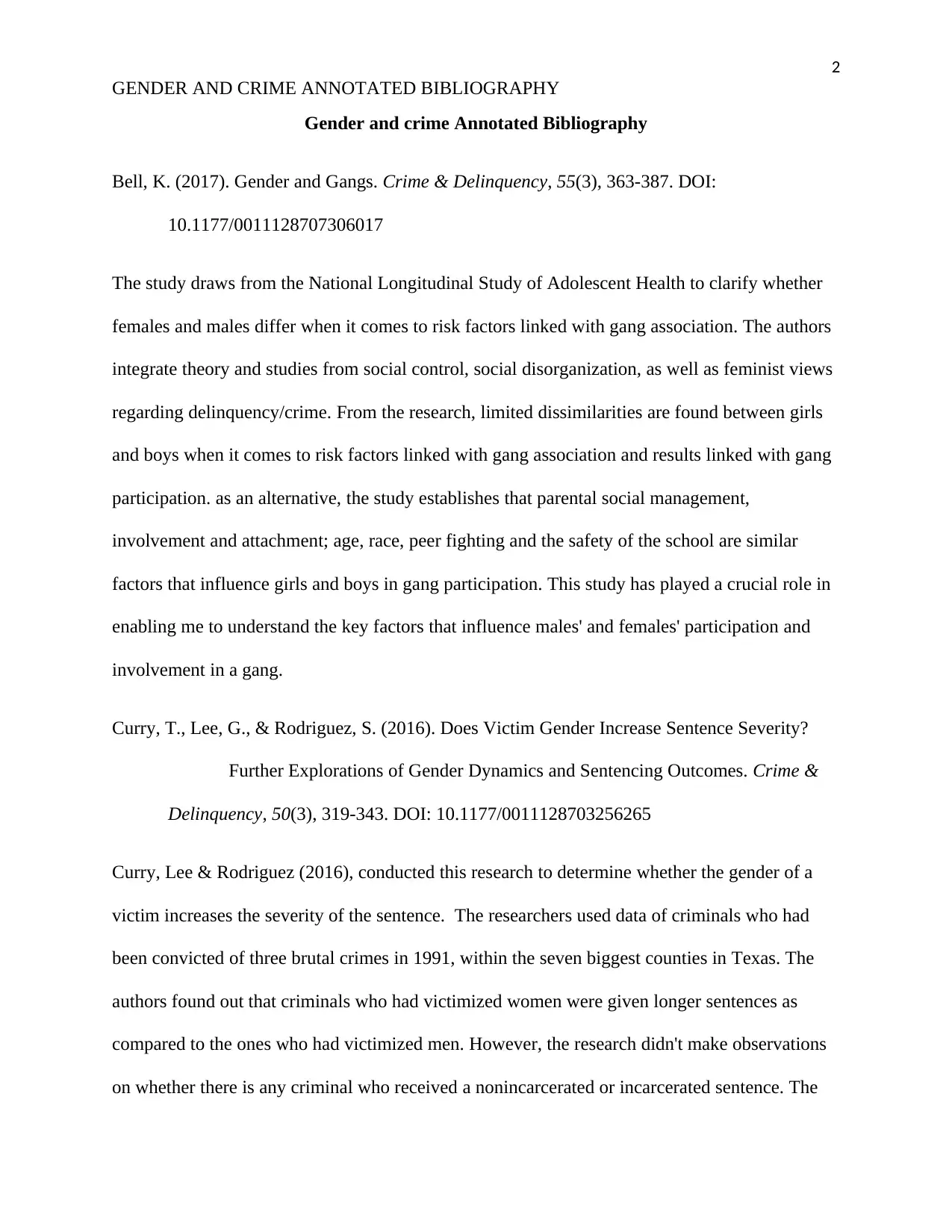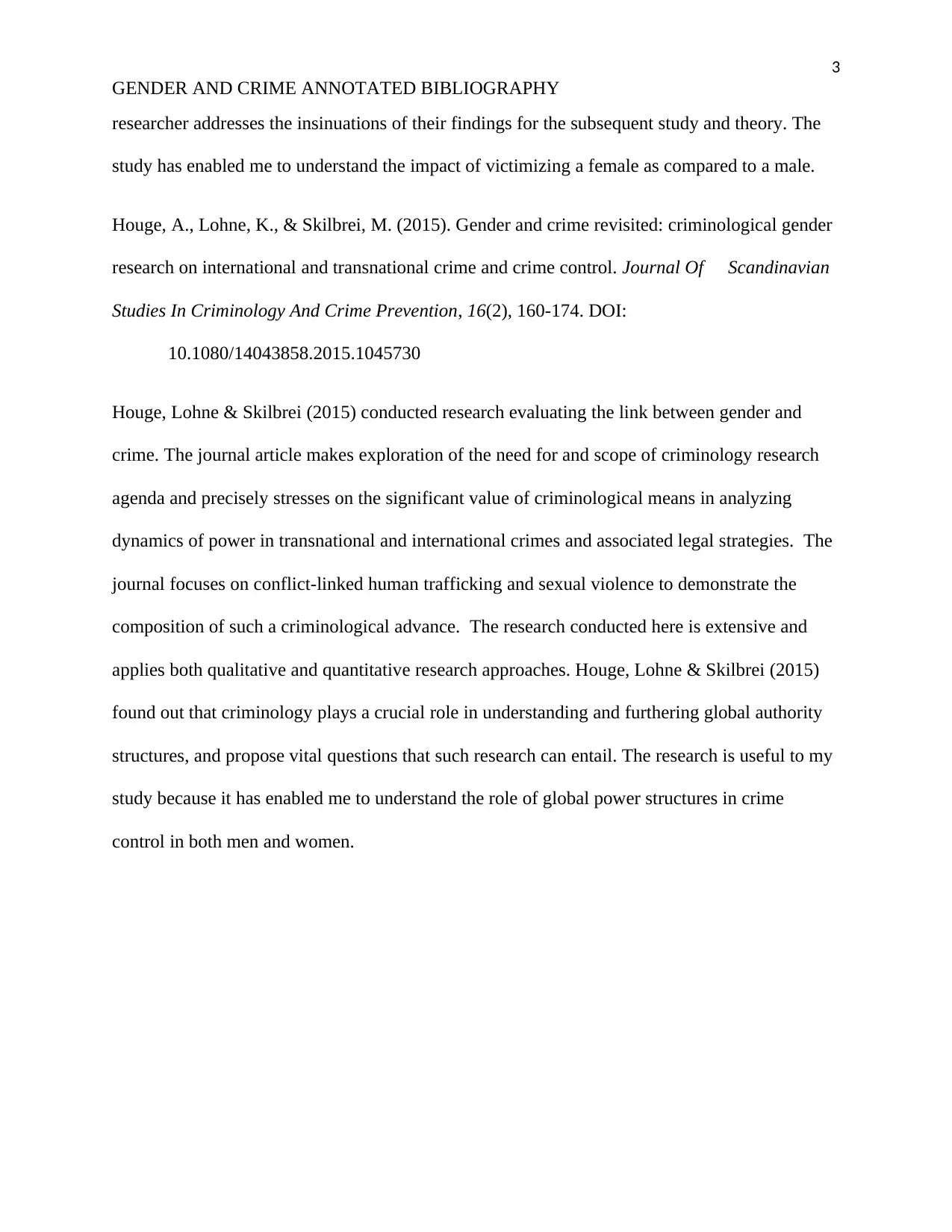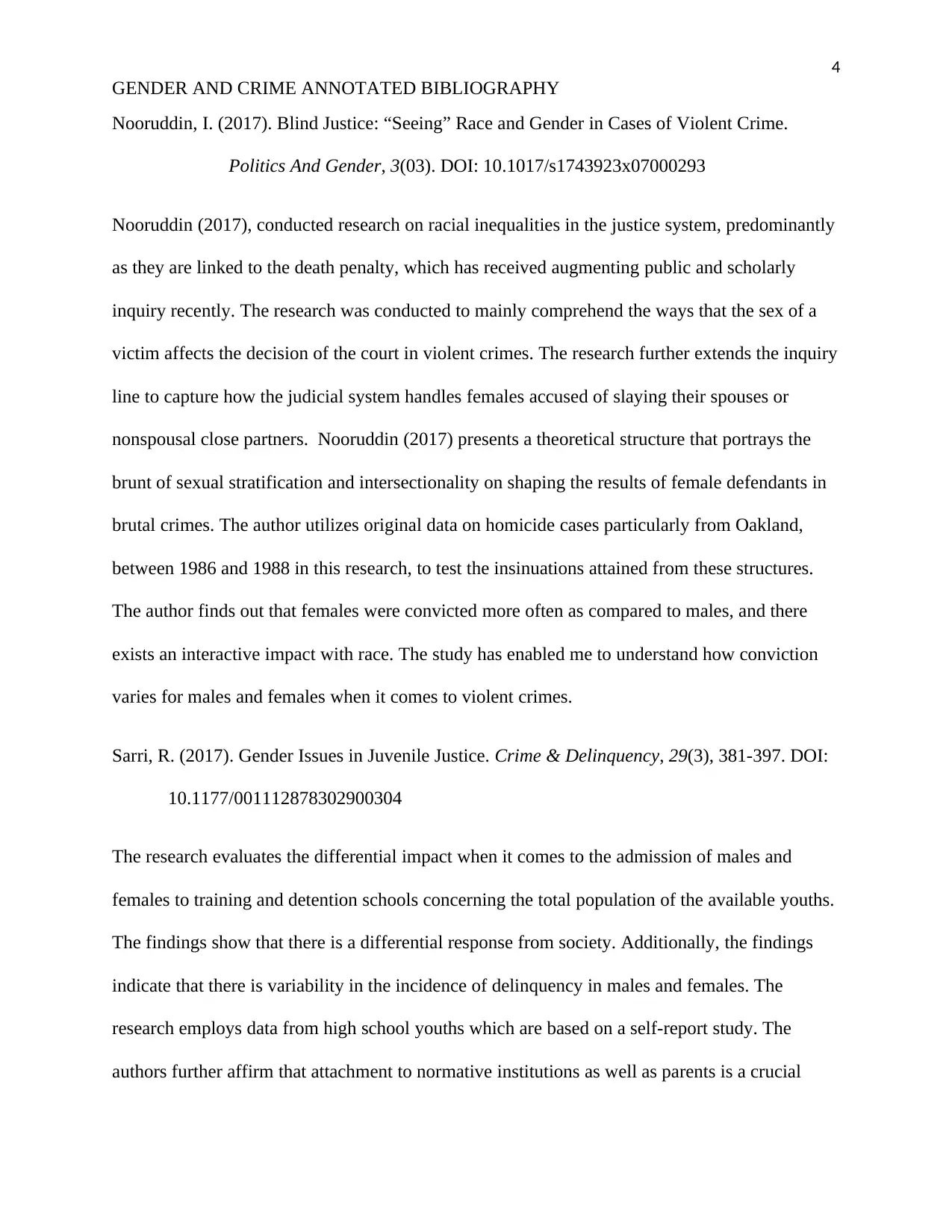LAW 325 Annotated Bibliography: Gender and Crime Research
VerifiedAdded on 2022/10/02
|5
|989
|406
Homework Assignment
AI Summary
This annotated bibliography for LAW 325 presents five scholarly journal articles exploring the intersection of gender and crime. The articles delve into various aspects, including the impact of gender on gang association, sentencing severity based on victim gender, the role of gender in international and transnational crime, racial inequalities in the justice system concerning violent crimes, and gender issues in juvenile justice. Each annotation summarizes the article's key findings, research methods, and its relevance to understanding the complexities of gender dynamics within the legal and criminal justice systems. The studies utilize both quantitative and qualitative approaches, examining factors such as parental involvement, victim characteristics, global power structures, and differential societal responses to male and female delinquency. The bibliography highlights the significance of considering gender as a crucial variable in both intervention and delinquency theories, as well as the varying experiences of males and females within the justice system.
1 out of 5






![[object Object]](/_next/static/media/star-bottom.7253800d.svg)